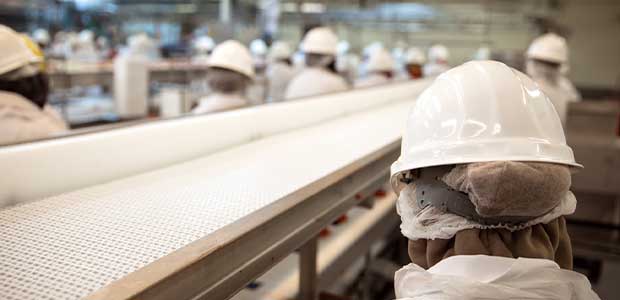
Missouri Meat Process Plant Cited for Overexposure to Carbon Dioxide
The company faces citations for two willful, four repeat and seven serious violations.
- By Bernard Fontaine
- Feb 10, 2023
Carbon dioxide (CO2) gas is often-overlooked as an important commodity in meat processing. It is used to stun livestock by a method called Controlled Atmospheric Stunning (CAS). This process is designed to comply with humane handling and animal slaughter laws in North America and it is deemed by some animal welfare experts as a better way to incapacitate animals with CO2 rather than by electrocution.
Last October (2022), an activist snuck into one of the largest pig slaughterhouses in the United States, dressed in a staff uniform, to descend 26 feet into a CO2 chamber and view the process. As noted in a report by Raven Deerbrook for the New York Times, CO2 is heavier than air, so the gas chambers are deep below ground.
Besides using CO2 for CAS, dry ice is used to keep meat products cold for transportation and cool the meat products and equipment during meat processing. Liquid CO2 is used to keep meat frozen or when it is used to flash-freeze food. The gas can be released into a worker’s breathing zone and exceed established OSHA health exposure limits. Excessive worker exposure to CO2 acts like a simple asphyxiant in the air (displaces oxygen in the air) that can cause headache, dizziness, dyspnea (breathing difficulty), malaise (vague feeling of discomfort), increased heart rate, cardiac output, blood pressure, coma, asphyxia, convulsions and potentially death. The long-term health effects are unknown.
In this case, a federal OSHA industrial hygiene investigation was conducted at a Lone Jack cattle processing plant in Missouri. The plant was previously cited seven times by OSHA inspectors for endangering workers since March 2020. During the inspection, OSHA found workers exposed to high levels of CO2 in the air. OSHA investigators allege that, despite knowing hazardous levels of CO2 existed, the company ZMDR LLC, which operates as Republic Foods, did not put an employee monitoring program in place or implement effective engineering or administrative controls to limit the workers' exposure.
In September 2022, OSHA exposure measurements showed the company allowed employees to be exposed to CO2 ranging from 7,100 to 10,000 parts per million (ppm), far exceeding the OSHA maximum Permissible Exposure Limit (PEL) of 5,000 ppm in air averaged over an eight-hour workday. OSHA cited the company in November 2020 for allowing the same hazard to exist at the Missouri processing plant. In addition to exposing workers to hazardous levels of CO2, federal inspectors found the company exposed workers to other workplace safety hazards. Proposed penalties for Republic Foods total $573,913 after OSHA inspectors found two willful, four repeat and seven serious violations.
About the Author
Bernard L. Fontaine, Jr. CIH, CSP, FAIHA is the Managing Partner of The Windsor Consulting Group, Inc.